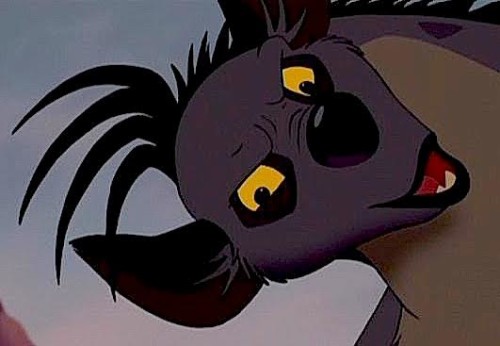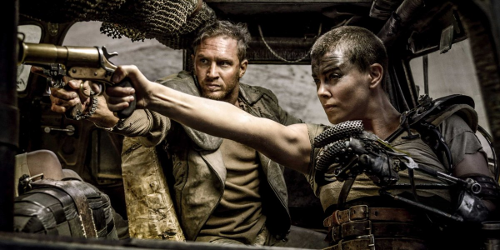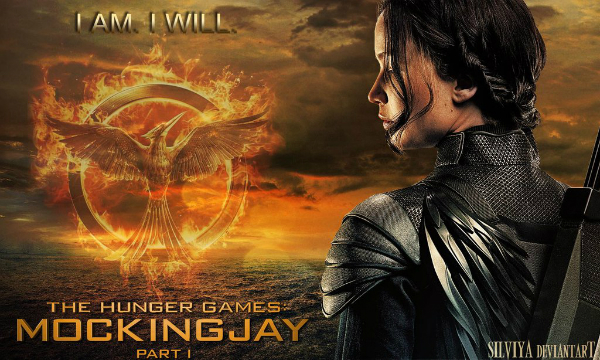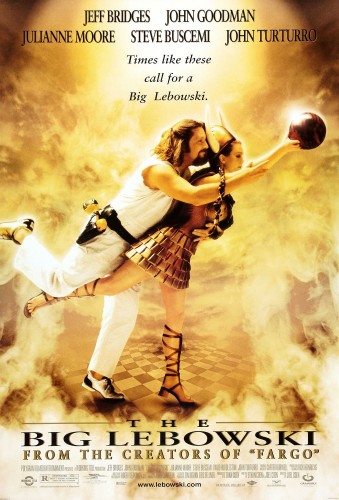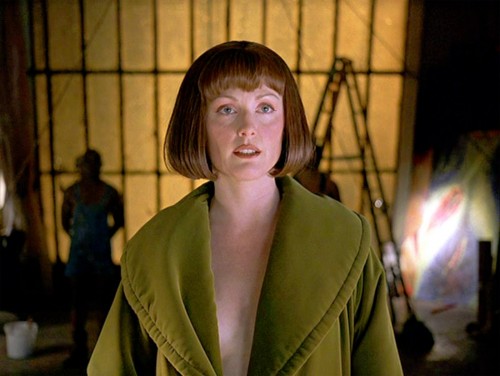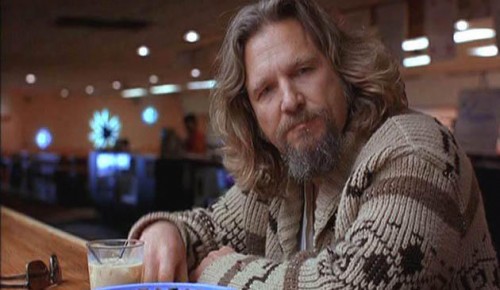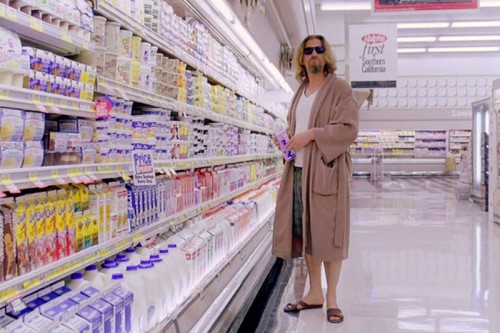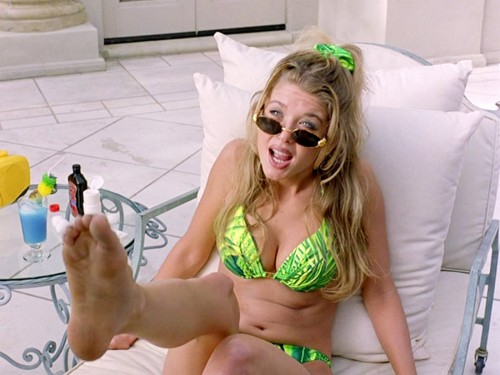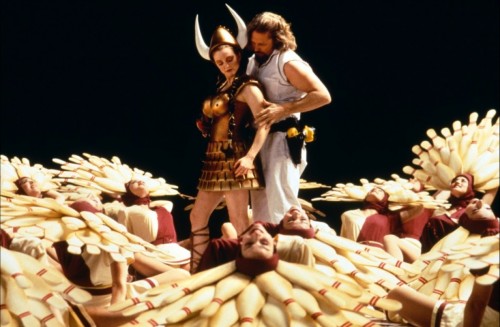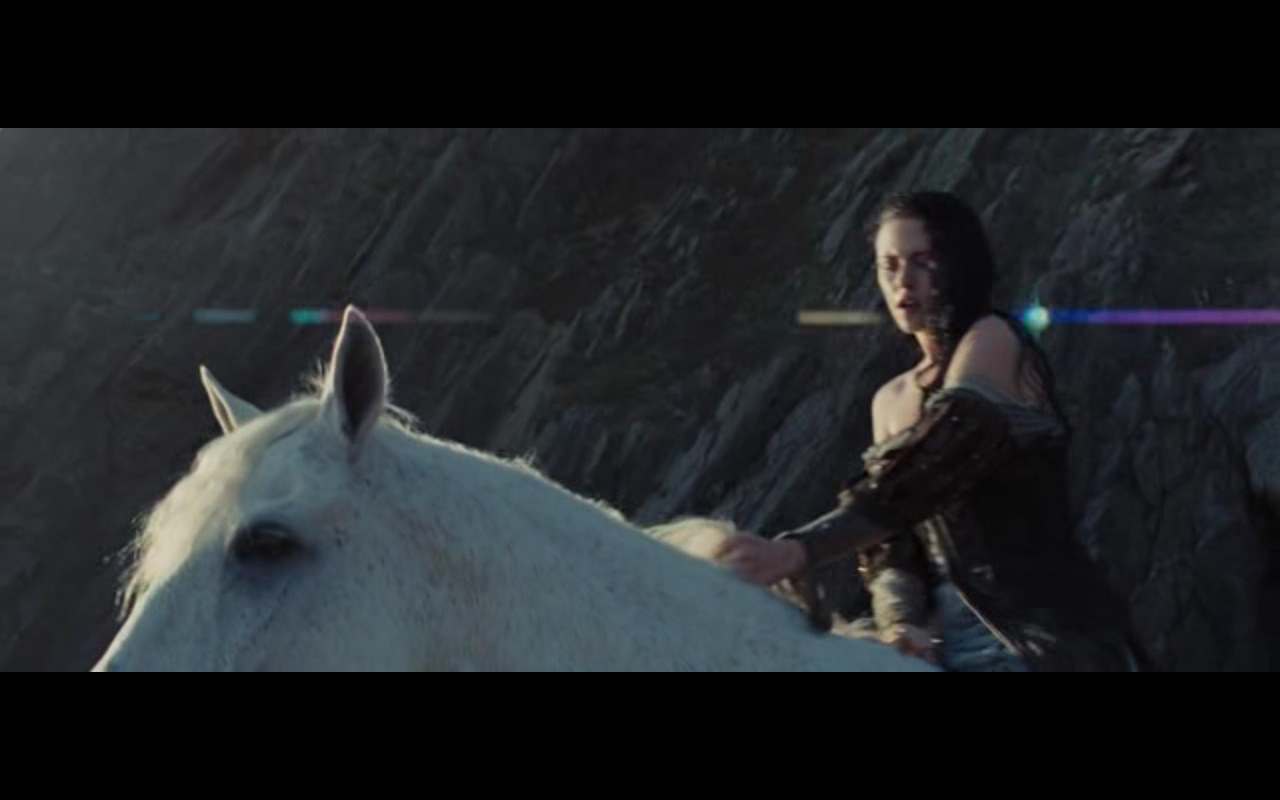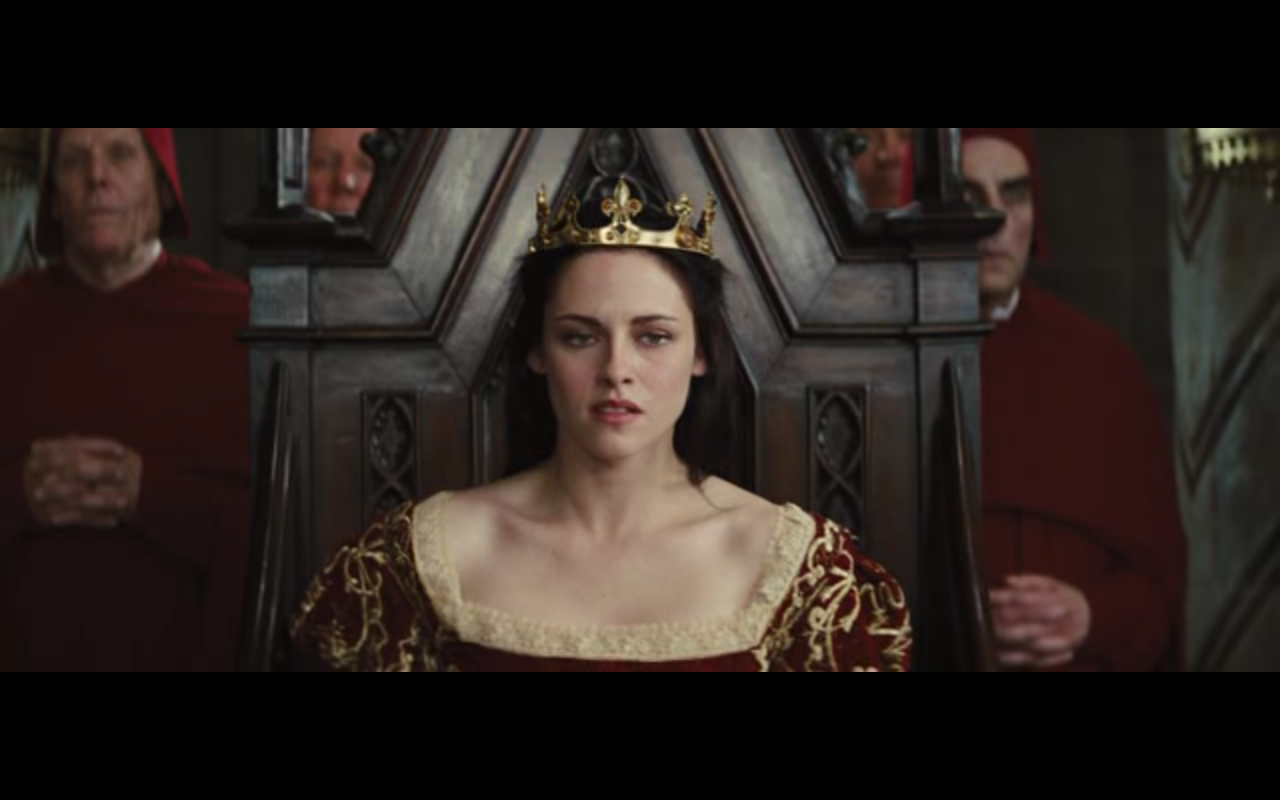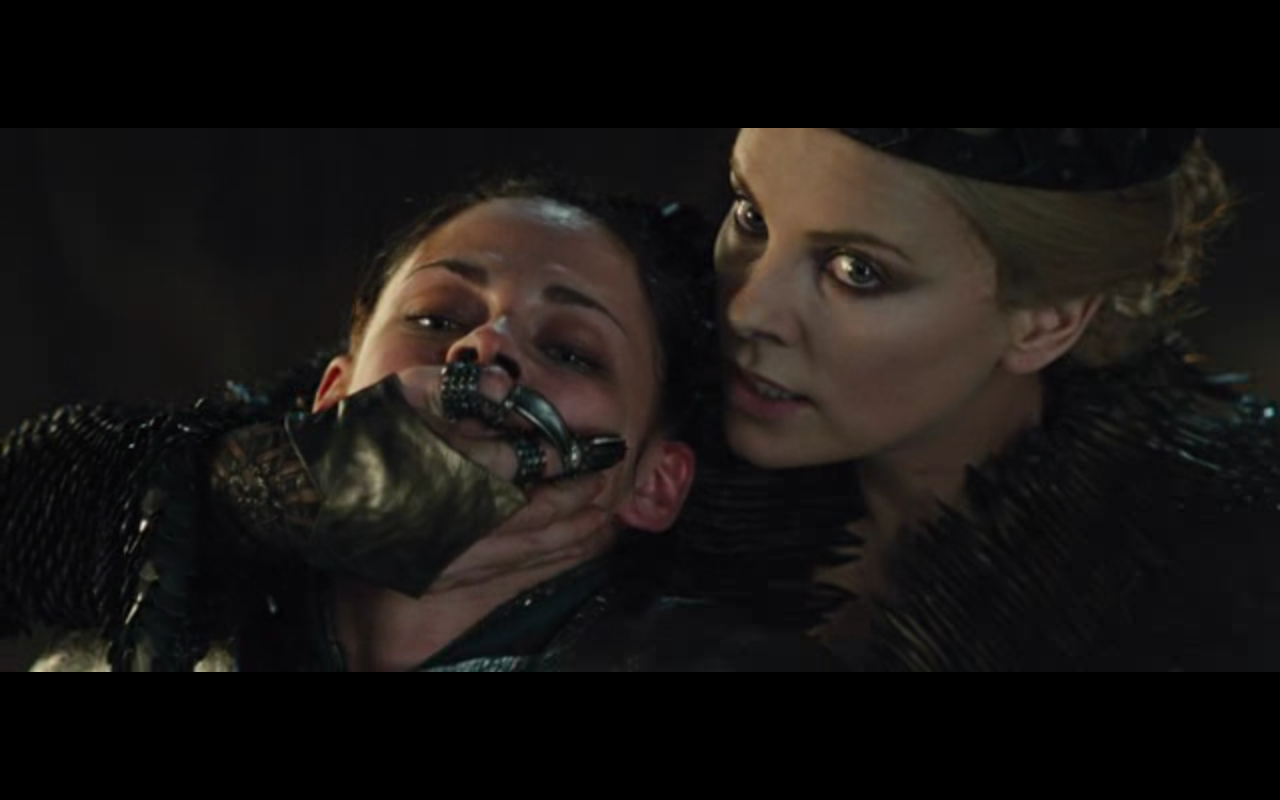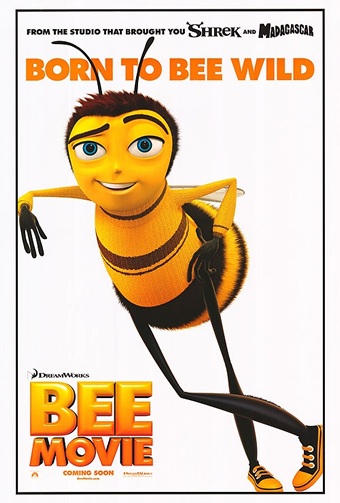
Written by Brigit McCone.
“I’ve always been a person who asks questions, who demands an explanation, which is partly why I was getting into trouble, because I guess as a woman I was supposed to be seen and not heard” – Dr. Wangari Maathai
Though Bitch Flicks has published an interesting analysis of gender in The Lion King by Feminist Disney, it neglects one important point: we are clearly the hyenas. Specifically, we’re Disney hyenas. Actual hyenas, according to Professor Kay Holekamp (who sounds like a real-life version of hyena-studying, dinosaur-fighting badass Dr. Sarah Harding, from Michael Crichton’s The Lost World) hilariously resemble an antifeminist’s nightmare – the females having evolved “pseudopenises” (peniform clitorises) that make mating without consent impossible, and enable the flushing out of unwanted sperm after recreational sex, the weaker males are reduced to whimpering, head-bobbing appeasement of the hierarchic hyena matriarchy. Disney may be aware of this, depicting Whoopi Goldberg’s Shenzi as the most vocal and assertive hyena. By softening hyena matriarchy, however, Disney accurately represents the aspirations of human feminists: Shenzi, Banzai, and Ed joke around and work together in casual solidarity. Shenzi is confident in her opinions and never belittled for this, nor is her acceptance conditional on romantic availability. Disney gave us the feminist ideal, but coded her as evil (*cough* Ursula).
There’s more. Disney’s hyenas constantly consult each other in decision-making. Their instinctive anti-authoritarianism is displayed when Scar proposes the assassination of Mufasa. Instead of scheming to crown Shenzi as Hyena Queen, the hyenas gleefully chant, “No king! No king! Lalalalalaaala!” understanding hierarchy as inherently oppressive. Shenzi has a clear concept of the need for solidarity to achieve progress, preventing Banzai and Ed from fighting each other, since internal divisions leave them “dangling at the bottom of the food chain.” Ed is non-verbal and has a visible intellectual disability. We can criticize this representation, but consider what it says about the hyenas: Ed’s buddies patiently decode his non-verbal communications and consult his opinion regularly, empowering him to develop to his full potential. Like Shenzi’s gender, Ed’s disability is never mentioned by the hyenas, as irrelevant to his personhood (hyenahood?). The creepily eugenic conformity of the lions, by contrast, is broken only by Scar’s darker-furred outsider, mockingly named after his facial disfigurement. Shenzi and Banzai have a point: man, are they ugly.
The hyenas adopt the spurned Scar as “one of us, our pal,” illustrating their openness to interspecies alliance. Simba heroically uses his closest interspecies friends, Timon and Pumbaa, as “live bait” without blinking. While the issue of Nala feeding on lovable supporting characters is raised by Timon’s “she wants to eat him, and everybody’s OK with this?!” it gets no reply but “relax, Timon.” Yet, the hyenas’ willingness to eat other species is the sole marker of their villainy, apart from sarcastic humor and bad puns, while the lions’ heroism is confirmed only by auspicious weather. All things considered, Disney is teaching your children that there is no greater threat to natural justice than an egalitarian democratic collective with inclusive gender and disability policies.
[youtube_sc url=”https://www.youtube.com/watch?v=JvKIWjnEPNY”]
“You can’t expect to wield supreme executive power, just because some babbling baboon rubbed juice on your head!”
“A poor person will cut their last tree to cook what may be their last meal. They’re not worried about tomorrow, they’re worried about today.” – Dr. Wangari Maathai
Scar deeply resents the lion culture of glorified strength and justified hierarchy that marginalizes him, but he is unable to think outside of it, only to imagine himself empowered by becoming its leader. Secure in his cultural supremacy, Scar interprets the Hyena Clan’s incomprehension of hierarchy as symptomatic of weakness and idiocy – “it’s clear from your vacant expressions, the lights are not all on upstairs, but we’re talking kings and successions, even you can’t be caught unawares!” – recalling patronizing settler interpretations of Native American democracy as “original innocence” rather than cultural sophistication. The tragedy of The Lion King is that the hyenas’ egalitarian clan is driven by hunger to abandon its principles, modeling itself on the very social order that is oppressing it. Villainous showstopper “Be Prepared” depicts a crowd of animals pledging loyalty to a lion on a rock pedestal, just like the heroic “Circle of Life” opening anthem. Disney downplays this blatant similarity by casting Scar’s ceremony as a Nazi (feminazi?) rally. Classic Godwin’s Law: if you can’t prove your heroes are better than your villains without putting Nazi iconography in your kids’ cartoon, you lose this argument. But the greater question is, are we Scar or are we Shenzi? Do feminist critics want to see Nala and Sarabi running the Pride, as role models for young girls, or do we want to promote egalitarian democracy?
[youtube_sc url=”https://www.youtube.com/watch?v=XkU23m6yX04″]
Scar’s not bossy, he’s the boss
“It amazes me now, in retrospect, to see how people can hide your history and can give you a complete blackout on who you are and what your people have gone through” – Dr. Wangari Maathai
In 1688, Aphra Behn published Oroonoko, having visited Surinam’s plantations as a young woman. A staunch Royalist, Behn’s novella portrays the enslavement of an African prince, whose “honor”, “rising and Roman” nose, “great soul,” and “noble” features code him as “naturally” aristocratic. It is therefore a terrible injustice for Prince Oroonoko, who oversees the traffic of slaves in his native land, to be himself enslaved. It makes surreal reading: Aphra Behn is colorblind, not because she is so progressive, but because she is so extremely conservative that she does not require race to justify systematic economic exploitation. The anti-aristocratic American Dream created the need for systemic racism, as the only alternative to dismantling exploitation. Nowadays, 20th century globalization has moved the marker of hierarchy again, from “civilized race” to “developed nation.”
The Lion King is, therefore, a thoroughly modern myth, because its anxieties are all geographical, centered on defending borders against starving masses. Sure, the magnificently posh James Earl Jones can voice Mufasa, King of the Beasts, but the Hyena Clan is ghetto. The Hyena Clan is third world. Hyenas are huddled masses, yearning to breathe free. Hyenas look like this, caricatures of “natural” Irish barbarity created in response to waves of desperate immigrants fleeing the catastrophic aftermath of the largely manmade Irish Famine (“clan” is Gaelic for “family,” fact fans). Hyenas, when they breach the borders of the Pride Lands, automatically become “slobbering, mangy, stupid poachers.” Illegal aliens, in other words. Cheech Marin’s Banzai is the threatening flipside to his patronized Tito in Oliver & Company. You will observe, too, that Simba and Nala’s assumed entitlement to visit hyena territory does not lead them to reconsider the hyenas’ right to enter the Pride Lands.

“‘Human beings’ is a strange species because sometimes it turns on itself, and destroys itself” – Dr. Wangari Maathai
The key to the film’s worldview comes after Scar and the hyenas take power. The entire Pride Lands are revealed to have descended into a version of the hyenas’ bleak and blighted elephant graveyard. Having associated hyenas with ghettoes and developing nations, by narrative role as much as voice coding, The Lion King reassures viewers that the hyenas’ hunger is not, after all, the result of their exclusion and segregation by lions. Oh no. Hunger is a natural, permanent feature of hyenas, which would infect the Pride Lands if they weren’t segregated. As Banzai grumbles “I thought things were bad under Mufasa,” the comforting vindication of the lions’ status quo is complete: even hyenas feel worse off when hyenas are given equal opportunities. Hyenas should be segregated because they’re too hungry; they’re too hungry because they’re segregated. It’s the Circular Reasoning of Life, and it moves us all. Contrast Dr. Martin Luther King Jr.’s assessment of ghettoes: “The slums are the handiwork of a vicious system of the white society; Negroes live in them, but they do not make them, any more than a prisoner makes a prison.” Contrast activist Dot Keet’s assessment of the African food crisis: “the programmes of the IMF and the World Bank undermined agriculture in many African countries, because they forbid African governments to give subsidies, and support, and marketing facilities to small producers, and they also undermined local production through forcing open these local economies.”
There’s a lot to be said for Adam Smith’s theory of free trade; one thing to be said is that free movement of labor is a fundamental market force. Employers move in search of lower wages, workers move in search of higher wages; supply and demand achieve equilibrium. A free trade agreement with any country cannot be justified without open borders with that country. Yet, as the Euro-American stranglehold on leadership of the IMF and World Bank shows, we support democracy within nations, but enforce plutocracy internationally. A quick look at Hollywood’s disproportionate underrepresentation of African and Asian stories indicates that global culture is shaped by the economic imperative to erase and dehumanize the developing world, just as it was once by the economic imperative to erase and dehumanize enslaved races, colonized “savages” (“Shenzi” is Swahili for “savage,” fact fans) or peasant “commoners.” At its heart, The Lion King is a fuzzy animal allegory justifying global inequality. Aside from weeping children in charity ads, which discourage foreign direct investment, The Lion King is one of the few African images that American and European children are exposed to, with American-voiced Mufasa justifying his dominance over “everything the light touches” because his fattened corpse may eventually fertilize grass for antelopes. A few of them.

“Instead of trickling down, go to them and say, ‘maybe there should be a trickle up'” – Dr. Wangari Maathai
In 1977, following reports by rural Kenyan women that their streams were drying up, their food supply becoming less secure and firewood growing scarce, Professor Wangari Maathai founded the Green Belt Movement on behalf of the National Council of Women of Kenya. Through programs of tree-planting, open seminars in civic and environmental development, support for locally owned businesses and promotion of “reduce, reuse and recycle,” significant progress was made in transitioning to a model of sustainable development, food security and environmental protection. In 2004, Dr. Wangari Maathai was awarded the Nobel Peace Prize for her tireless work to empower local leadership, female leadership and environmental stewardship. So, the actual devastation of Kenya was tackled, not by a lion’s roar, but by grassroots activism, community solidarity and the empowerment of women and other marginalized groups; by viewing poverty and environmental degradation as linked, rather than competing concerns. Does that sound more like the philosophy of Disney’s lions, or their hyenas?
[youtube_sc url=”https://www.youtube.com/watch?v=koMunNH1J3Y”]
“Changing the top if you don’t have the grassroots is almost impossible” – Dr. Wangari Maathai
Now, I’m not advocating ripping our leaders apart, unless that’s an African predator metaphor for dismantling their institutions and redistributing their power. But would Shenzi, mascot of sarcastic intersectional feminists everywhere, abandon her Hyena Clan to be an honorary lion? No, no, and a thousand times no, my fellow hyena bitches. That is not how real hyenas roll. So, go ahead. Rewatch The Lion King. Revel in its lush, hand-drawn animation, epic sweep and stirring music. Celebrate Julie Taymor’s Tony awards, and her bringing much-needed normalization (a.k.a. “diversity”) to Broadway with the triumphant stage adaptation’s Black cast. But don’t you ever, for one second, forget that we’re the hyenas. Until hyenas have their own historians, tales of the hunt shall always glorify the lions. No king! No king! Lalalalalaaala!!
[youtube_sc url=”https://www.youtube.com/watch?v=DFtBjc1dz7w”]
See also at Bitch Flicks: “Ten Documentaries About Political Women”
Brigit McCone cries when Mufasa dies. Every bloody time. She writes and directs short films, radio dramas and The Erotic Adventures of Vivica (as Voluptua von Temptitillatrix). Her hobbies include doodling and clicking this link.
